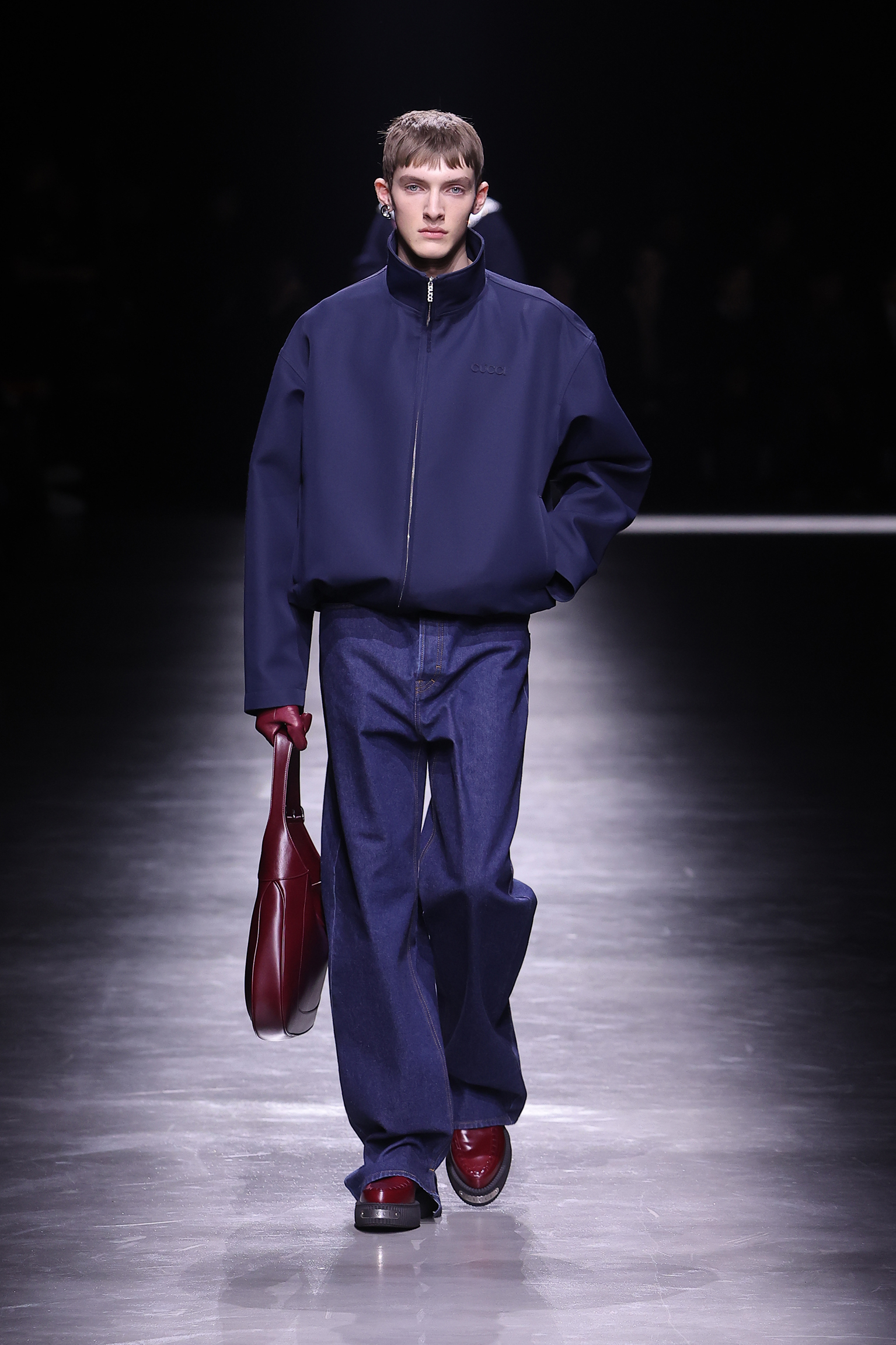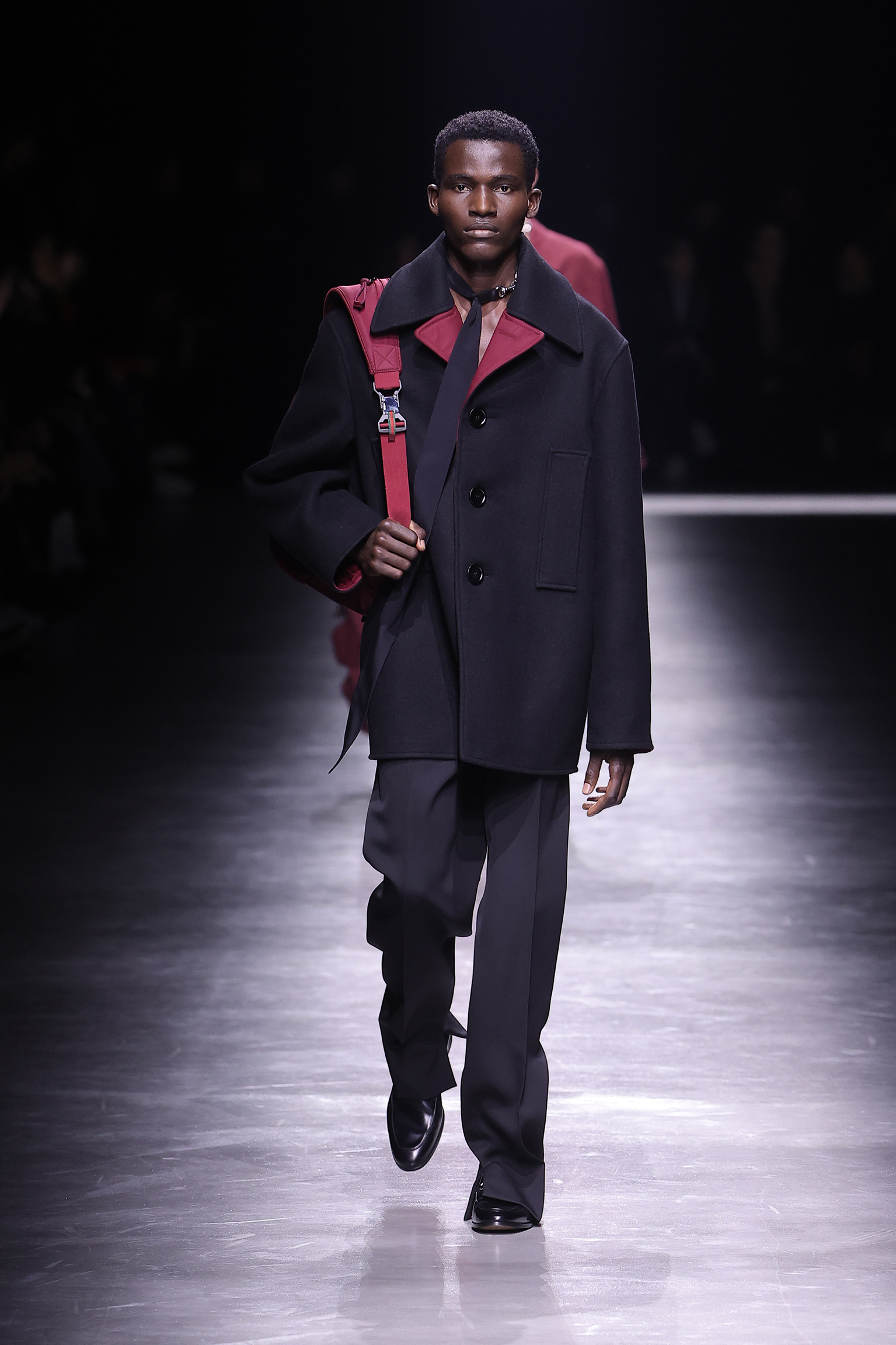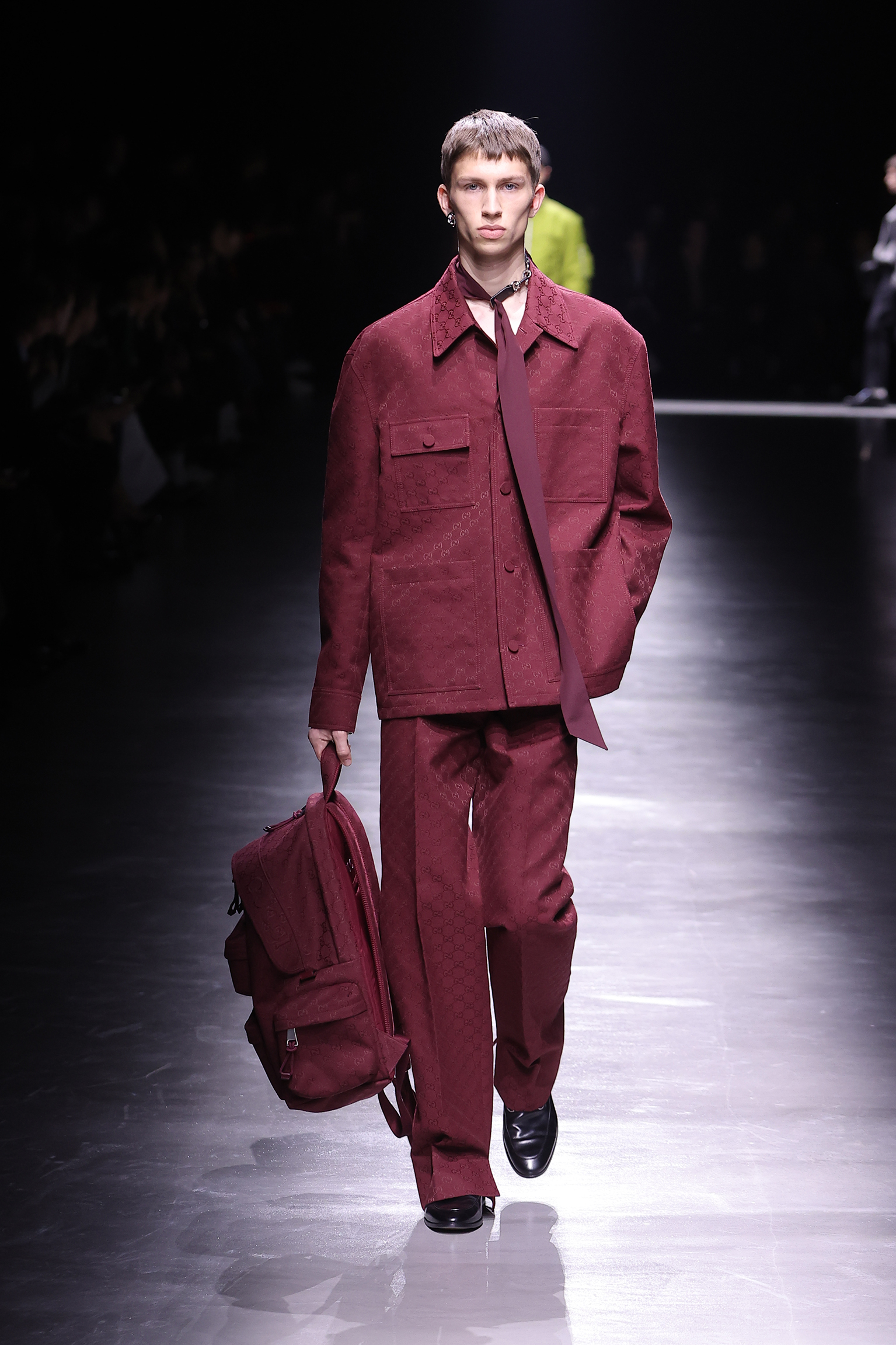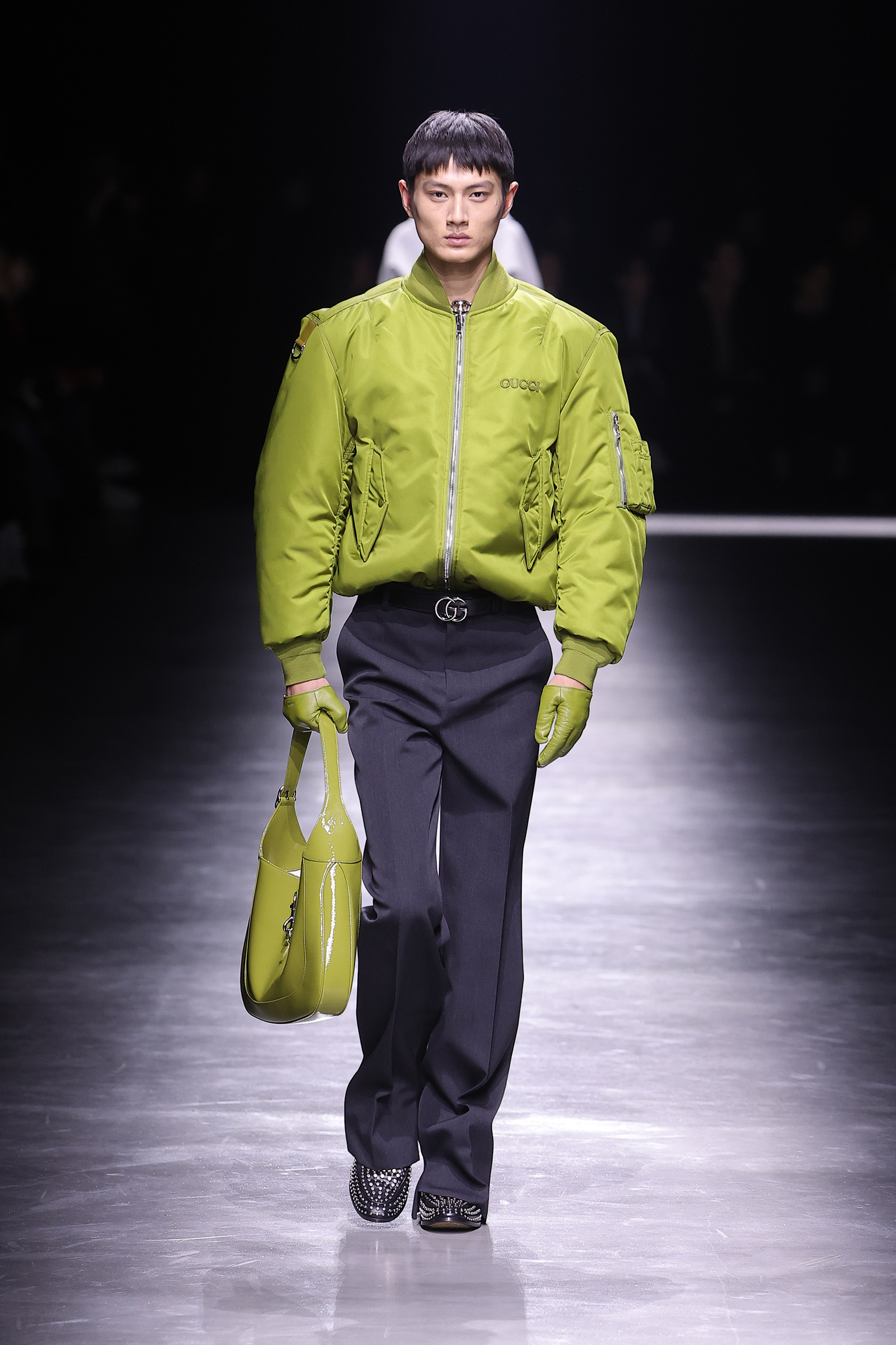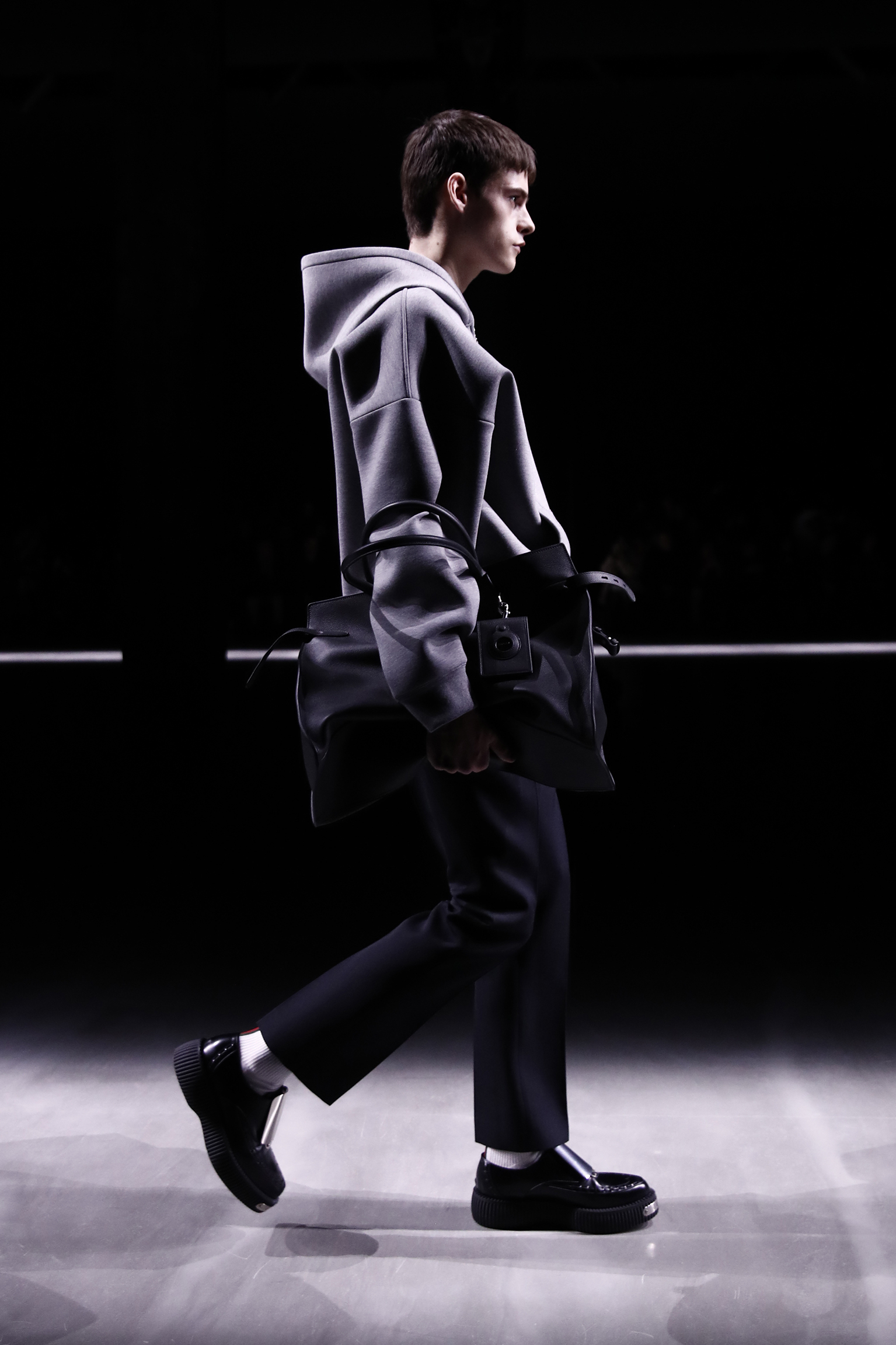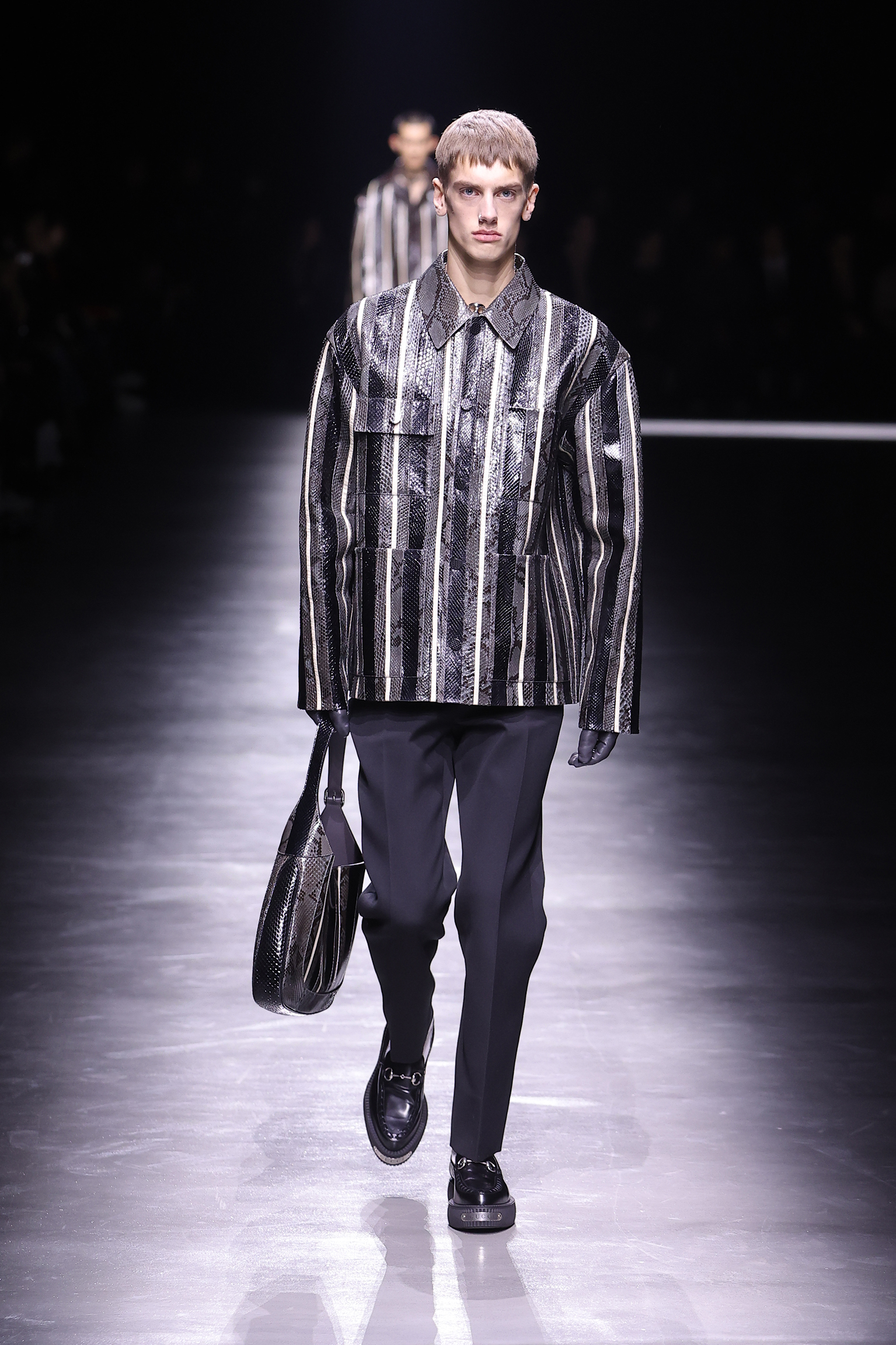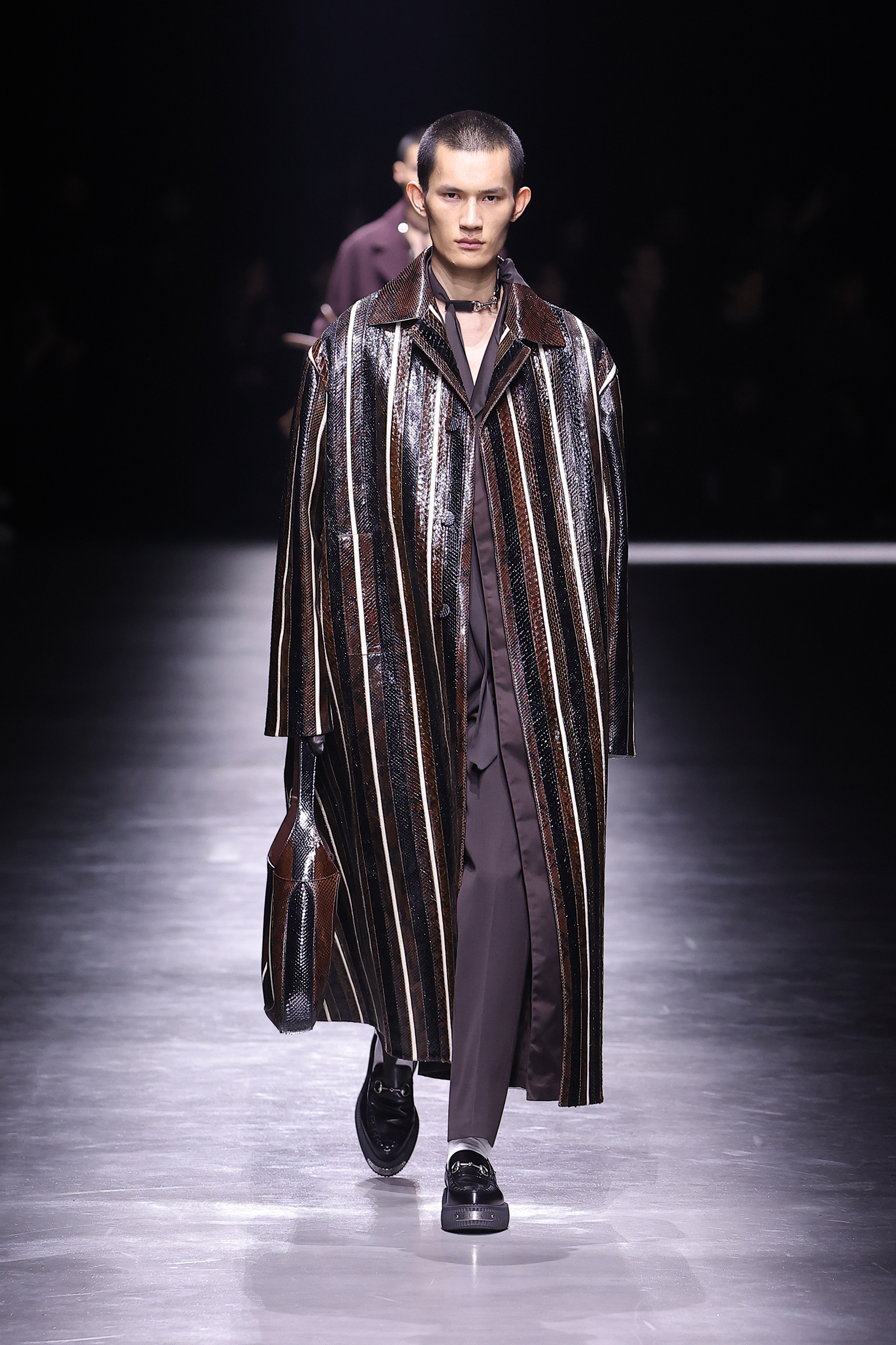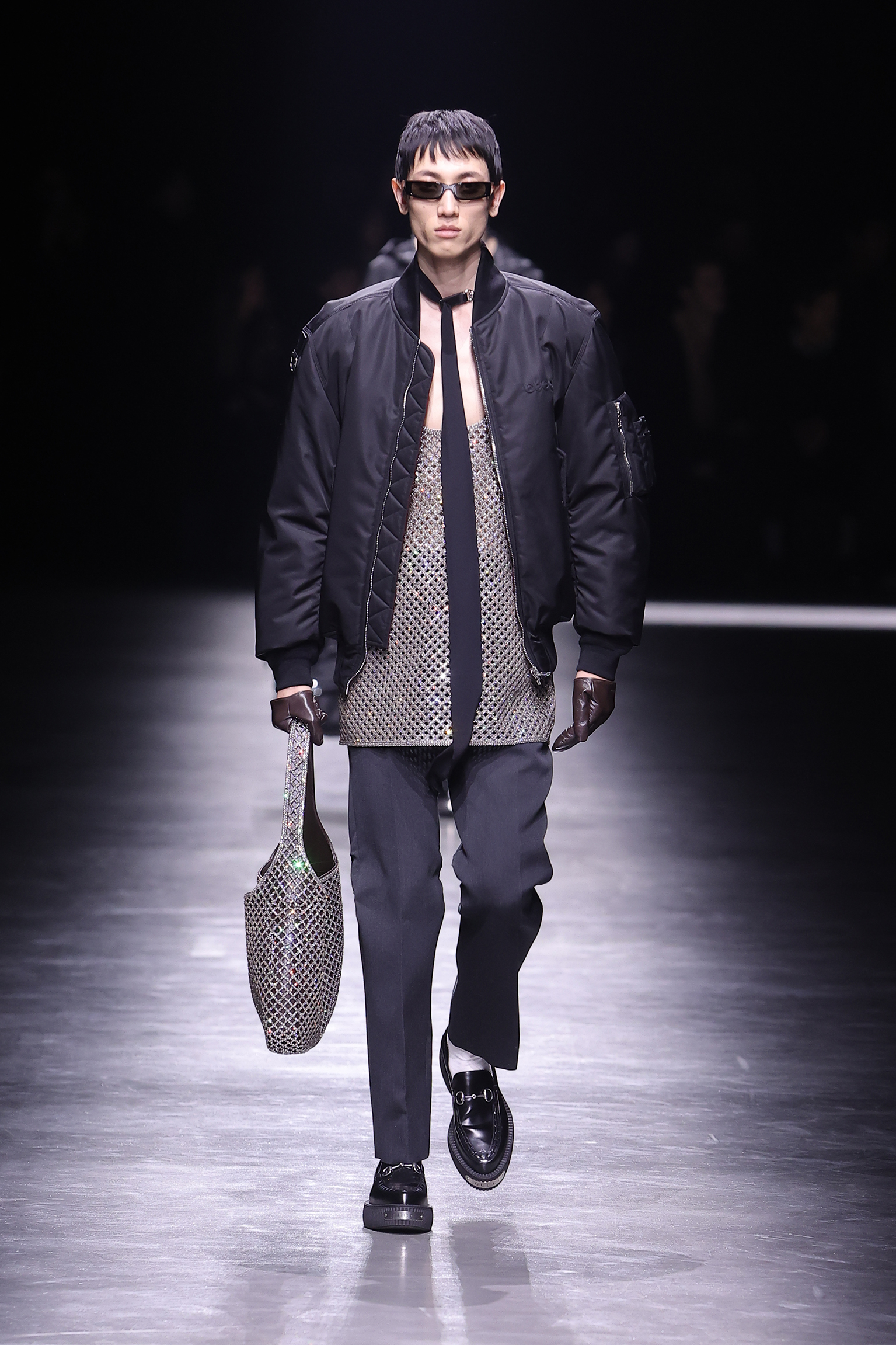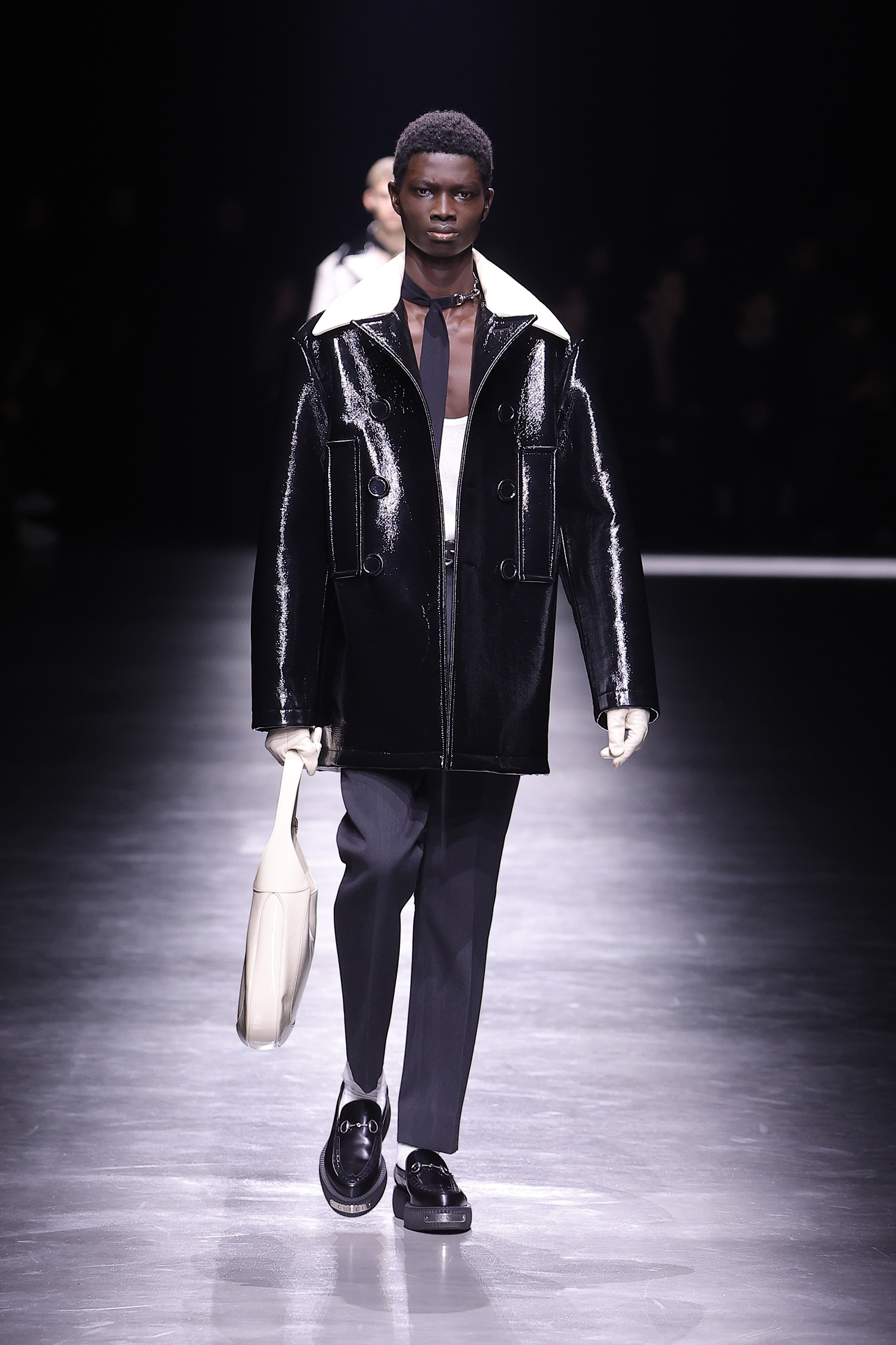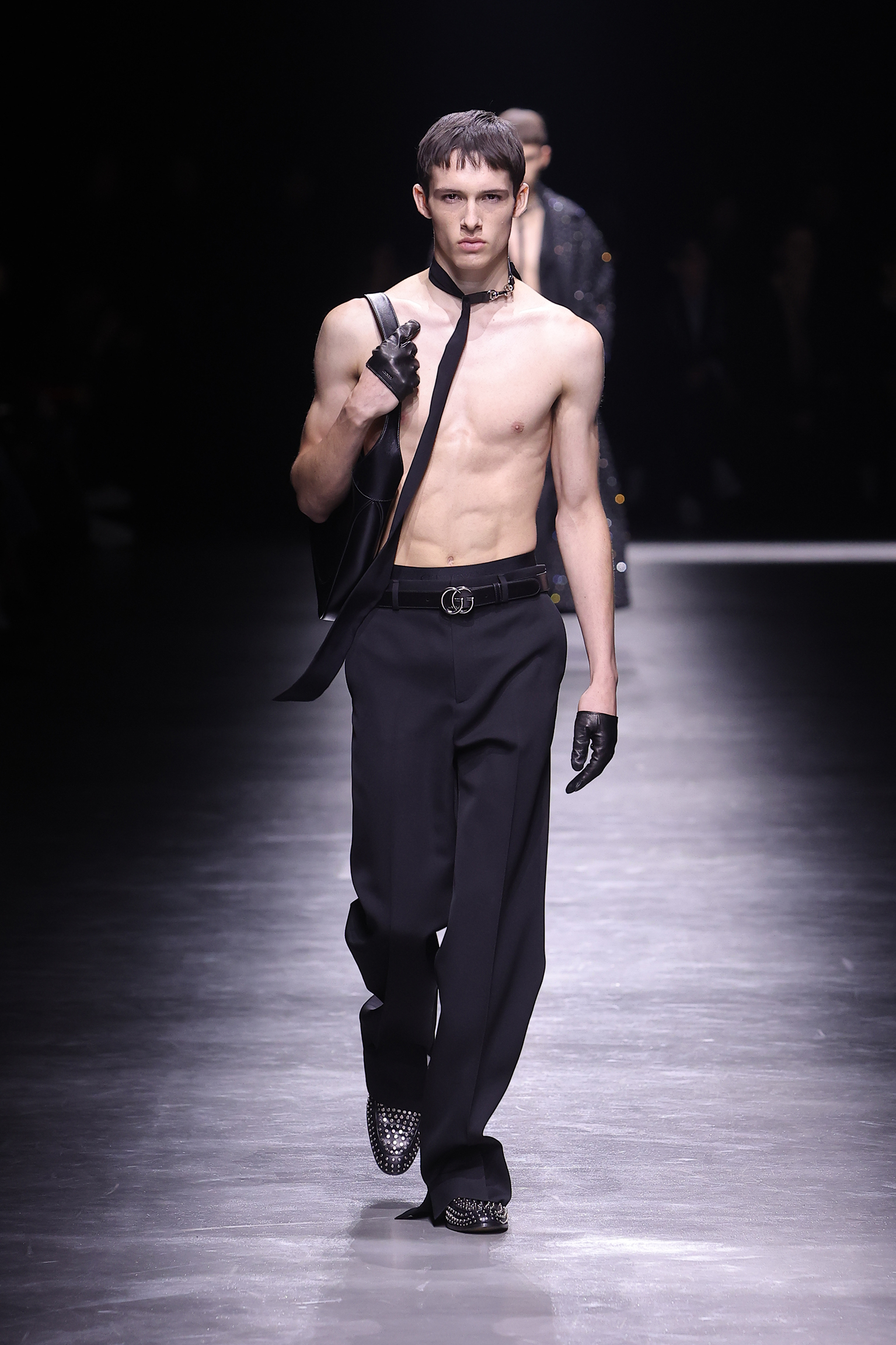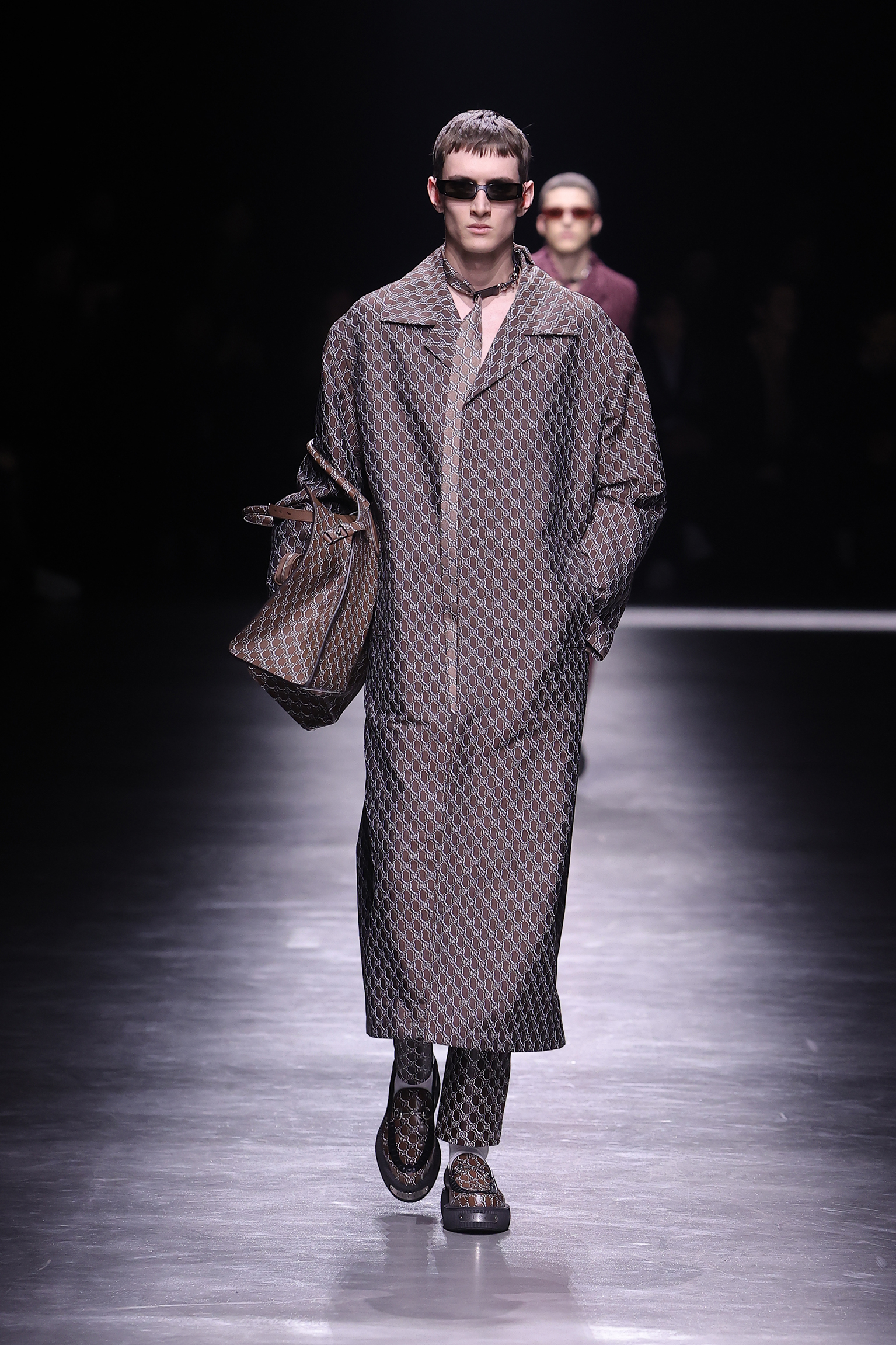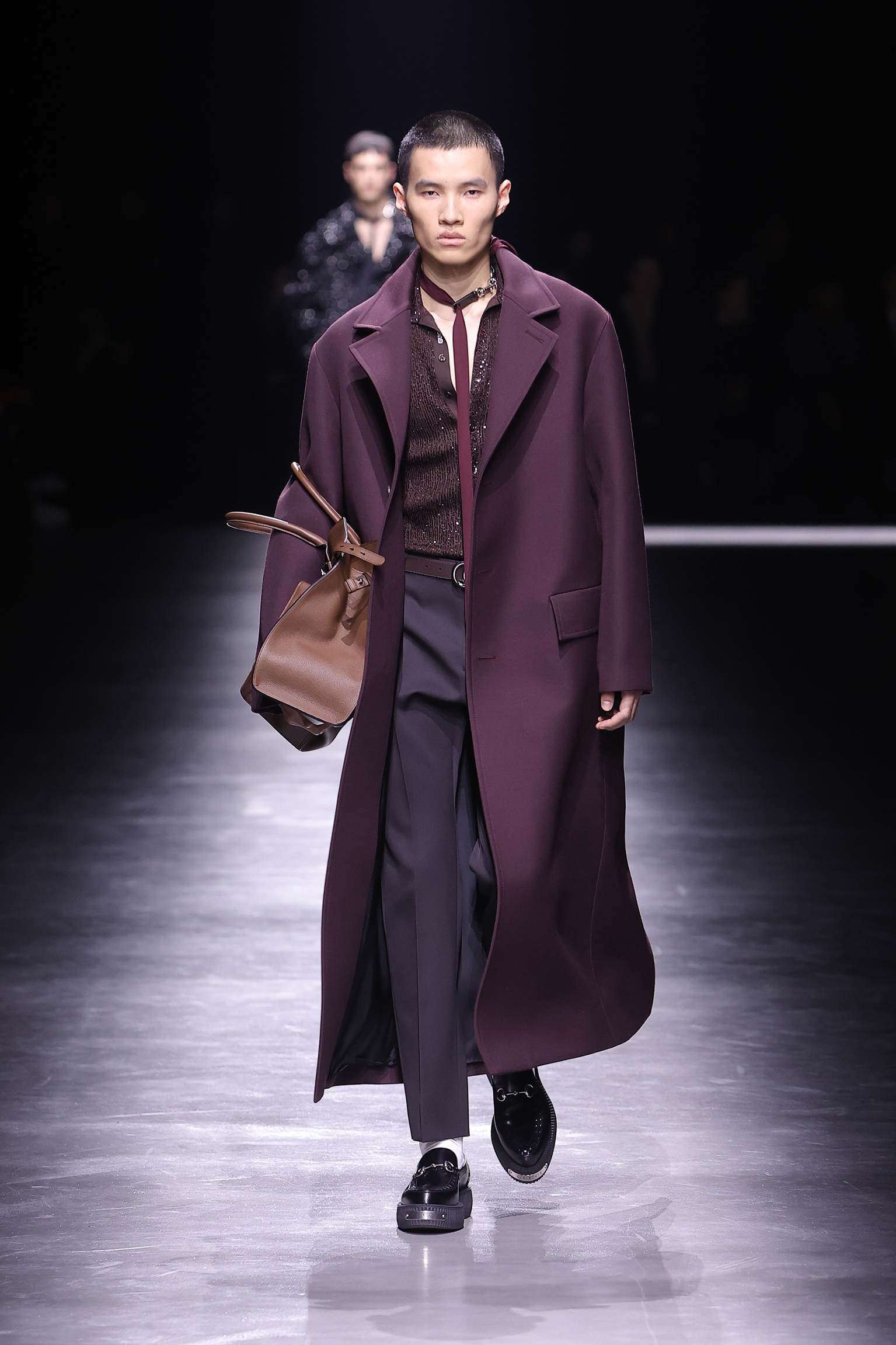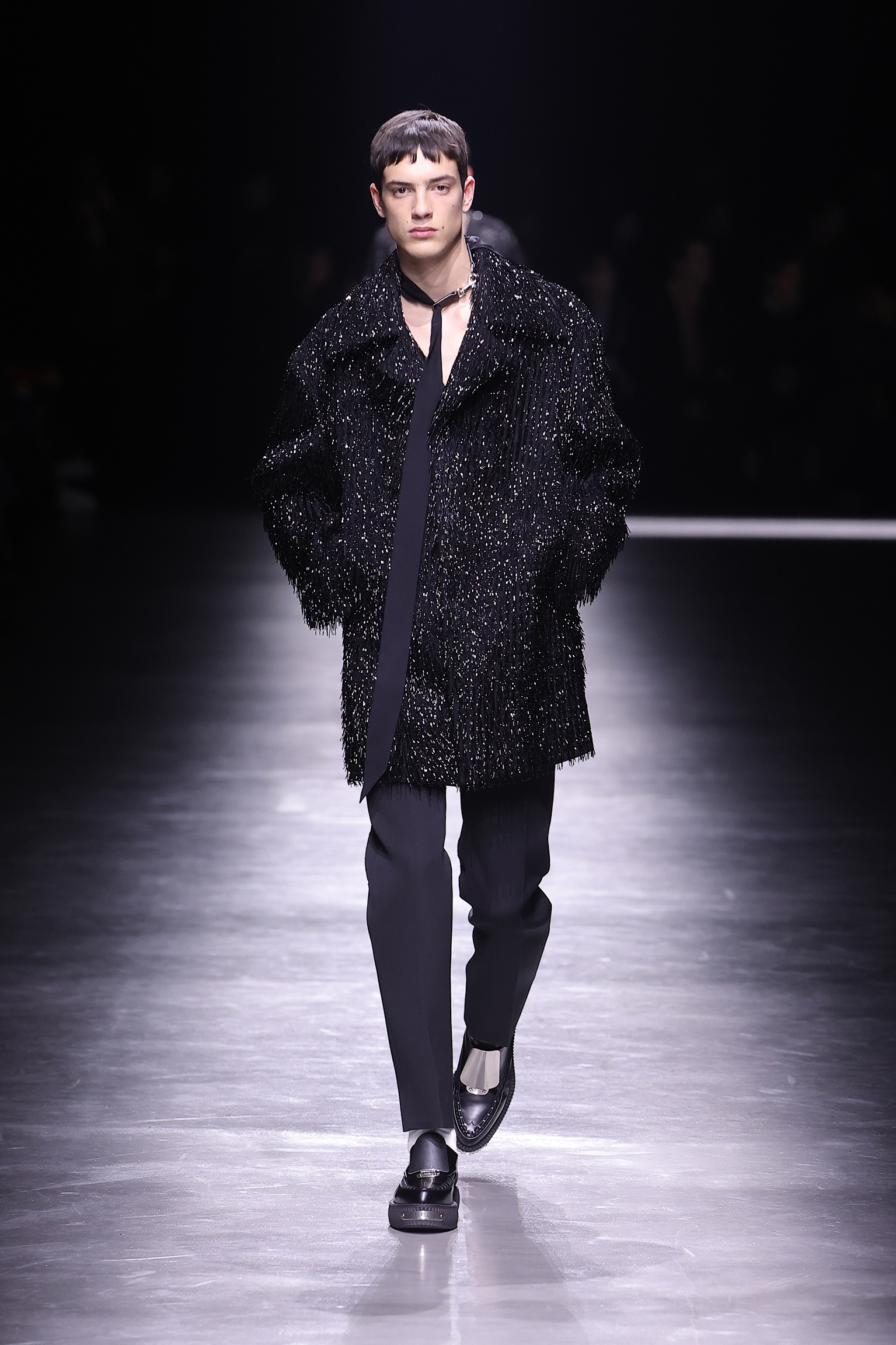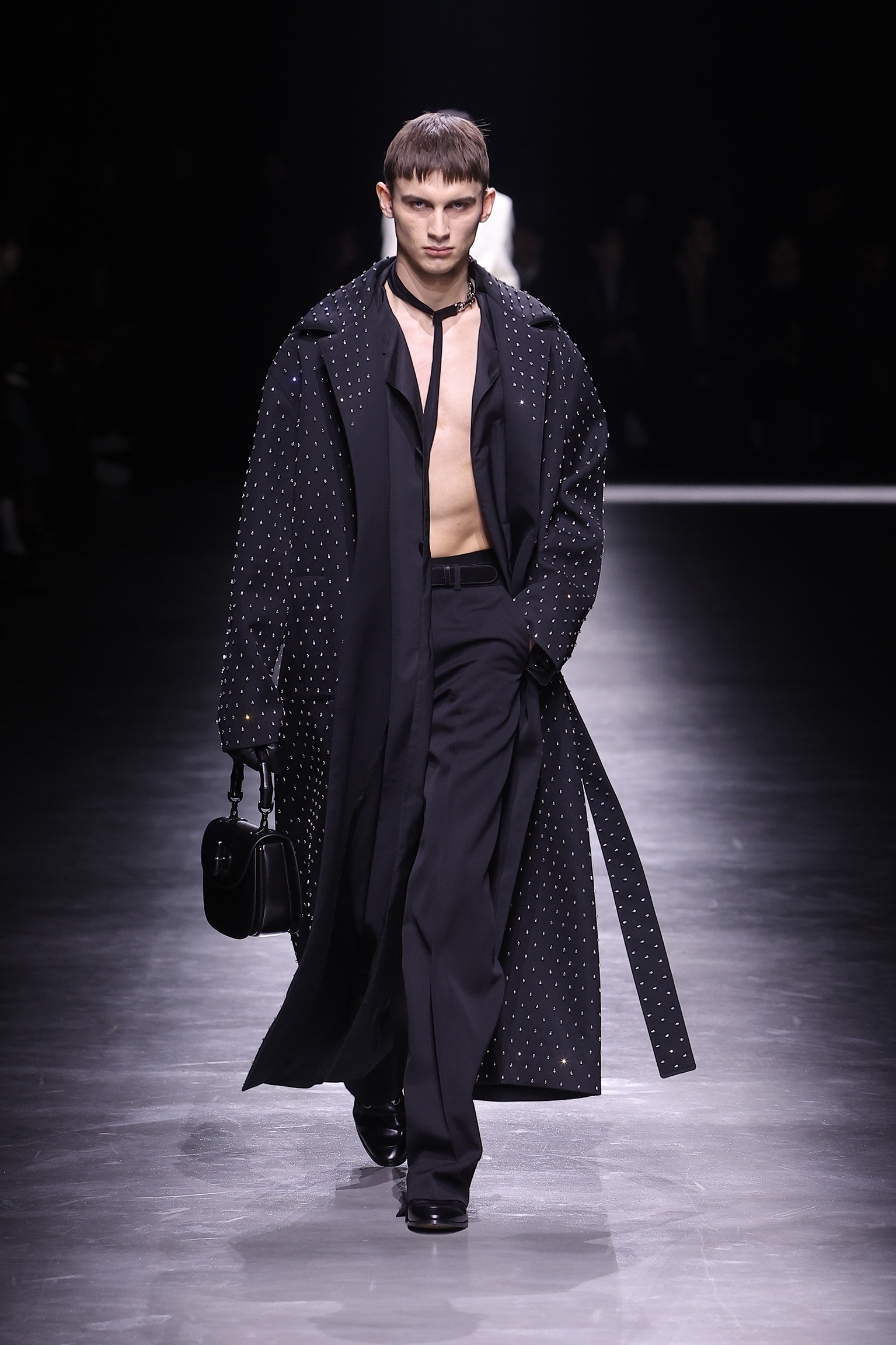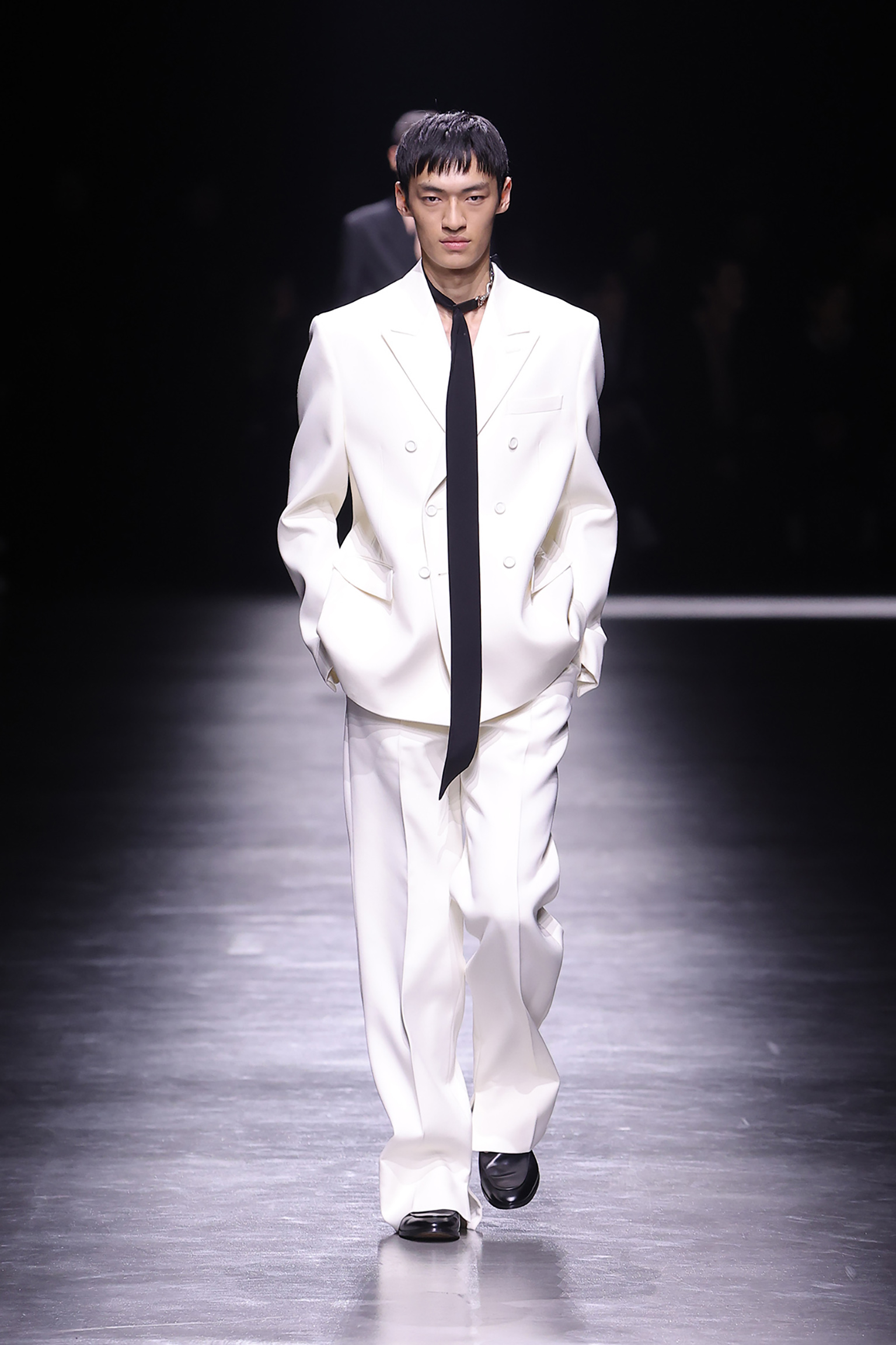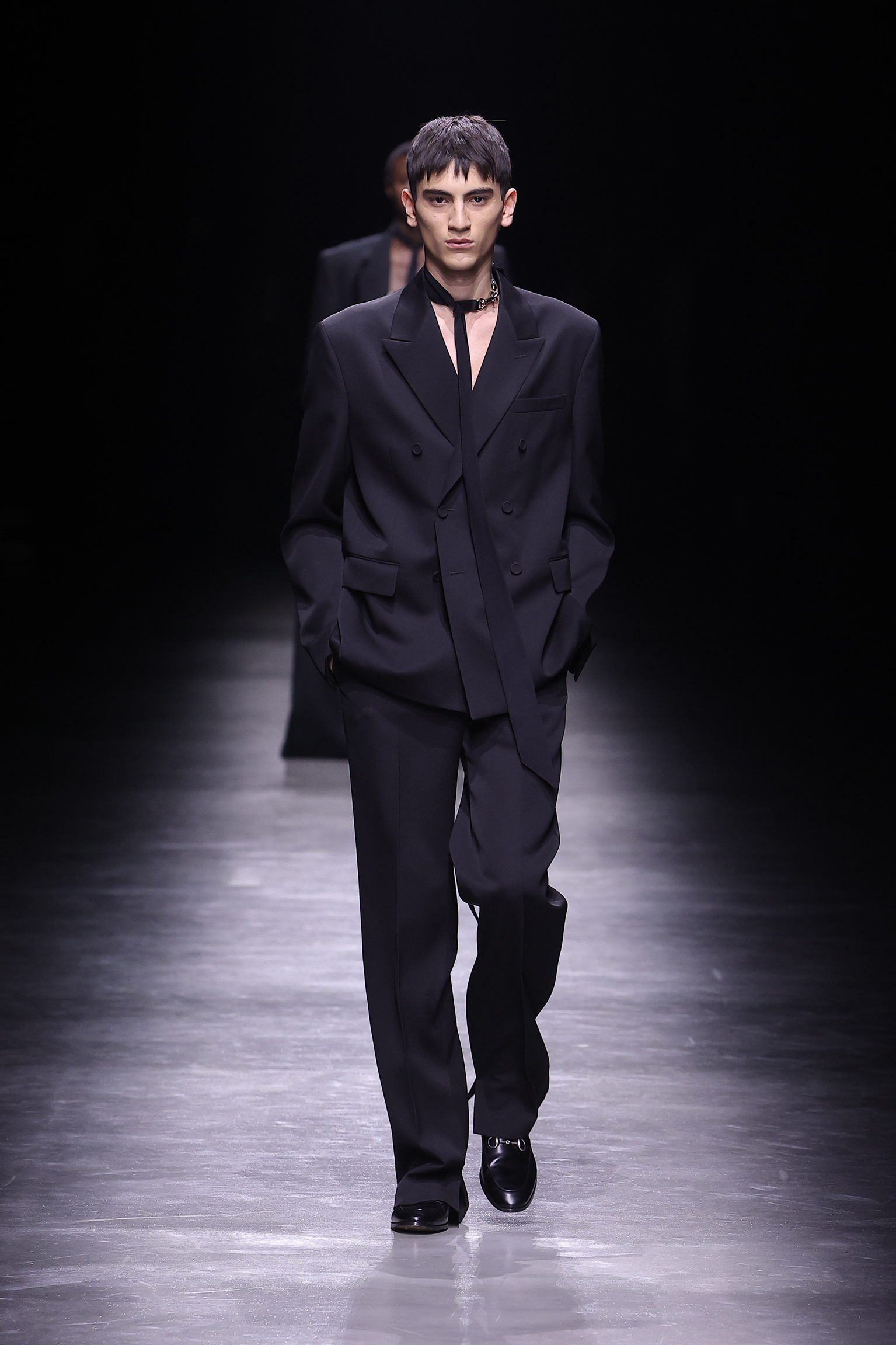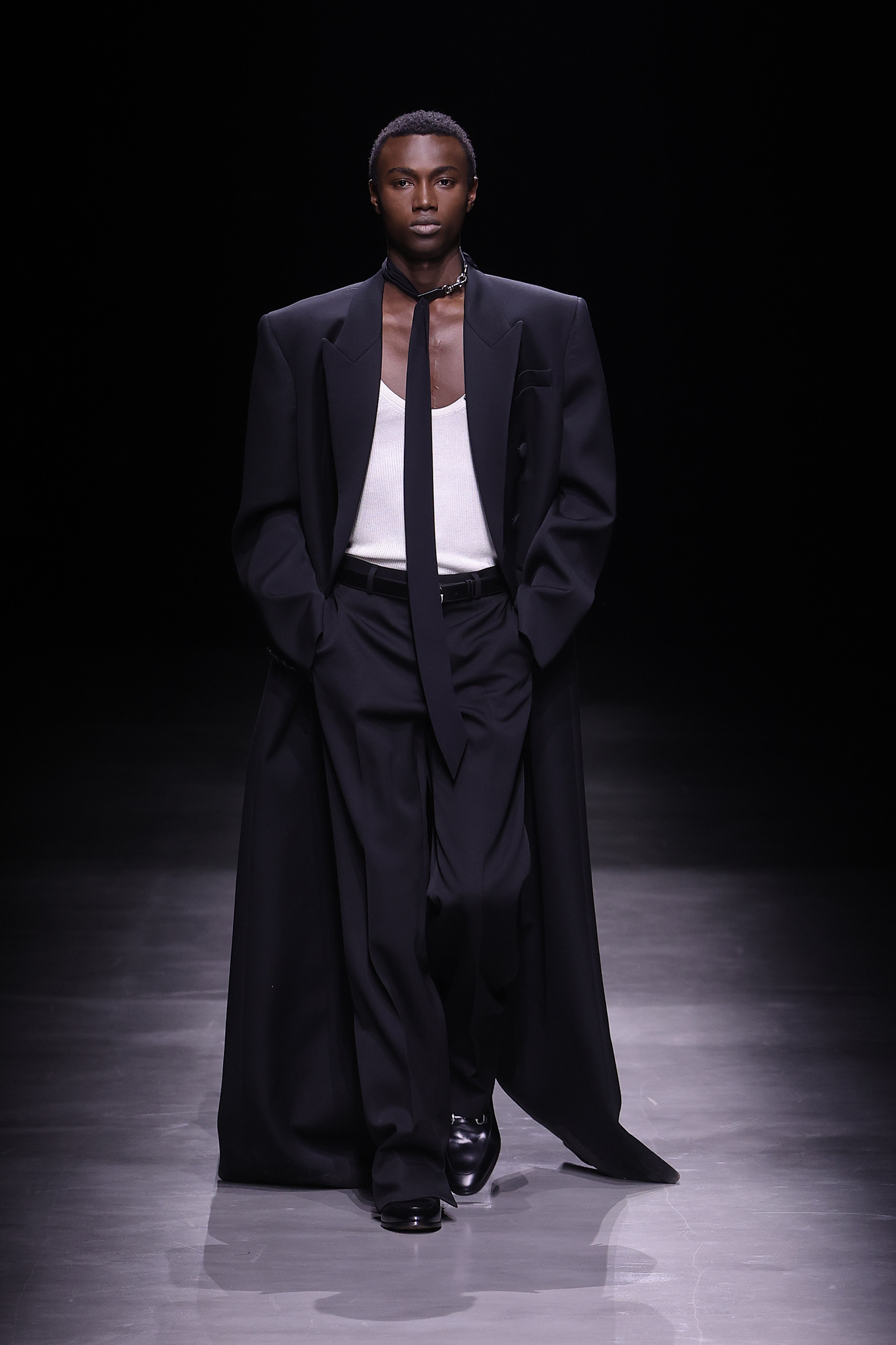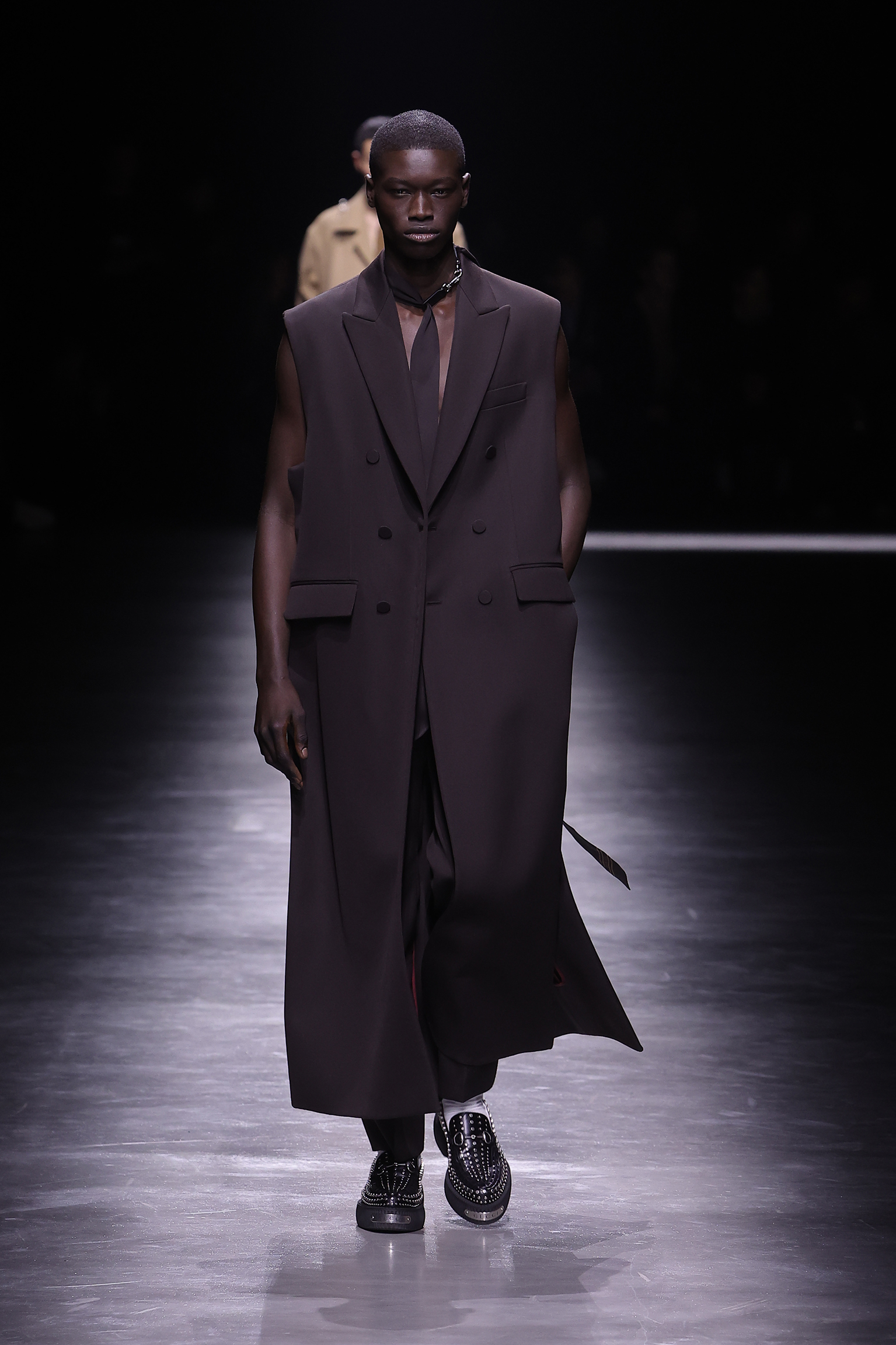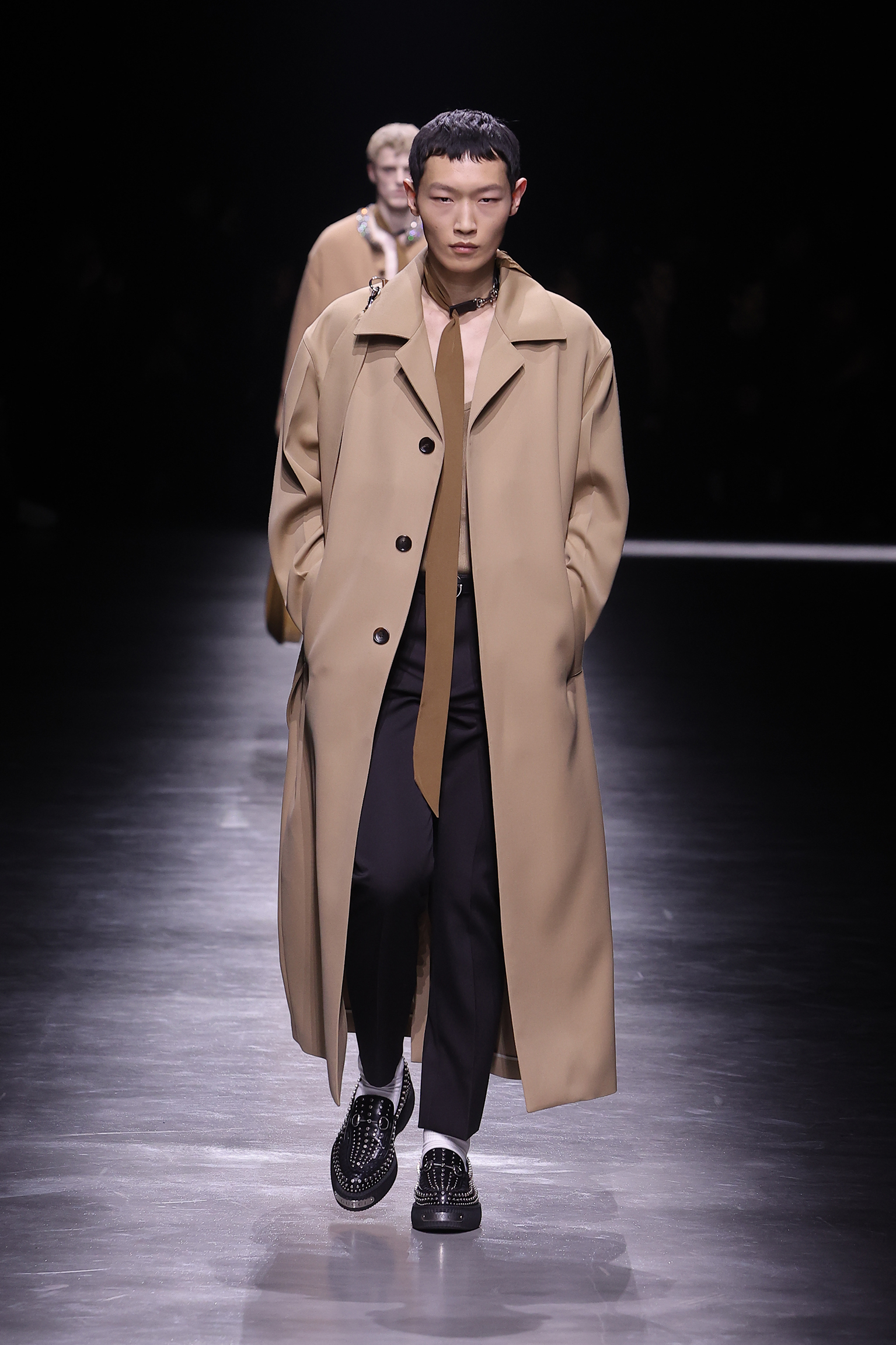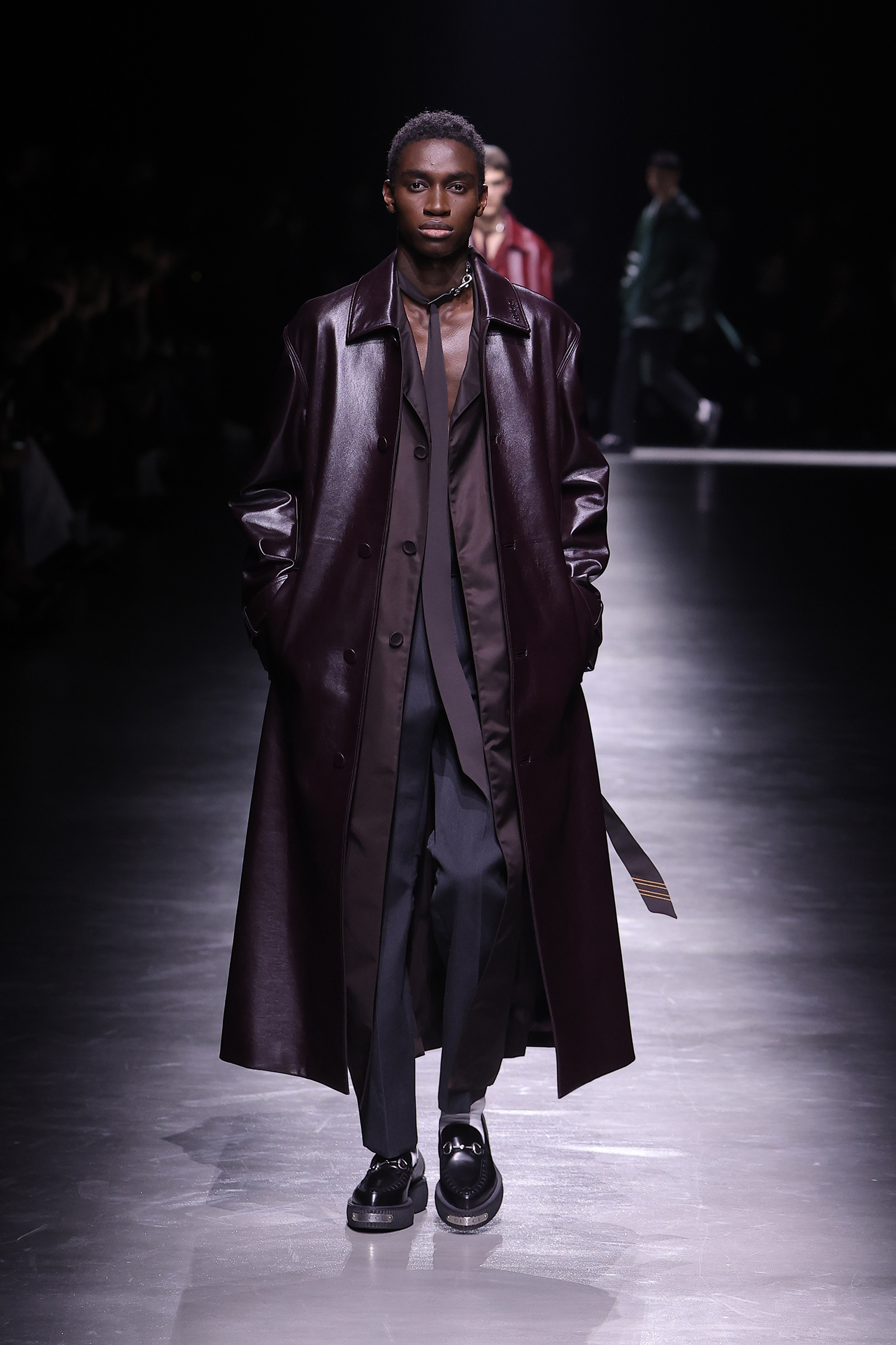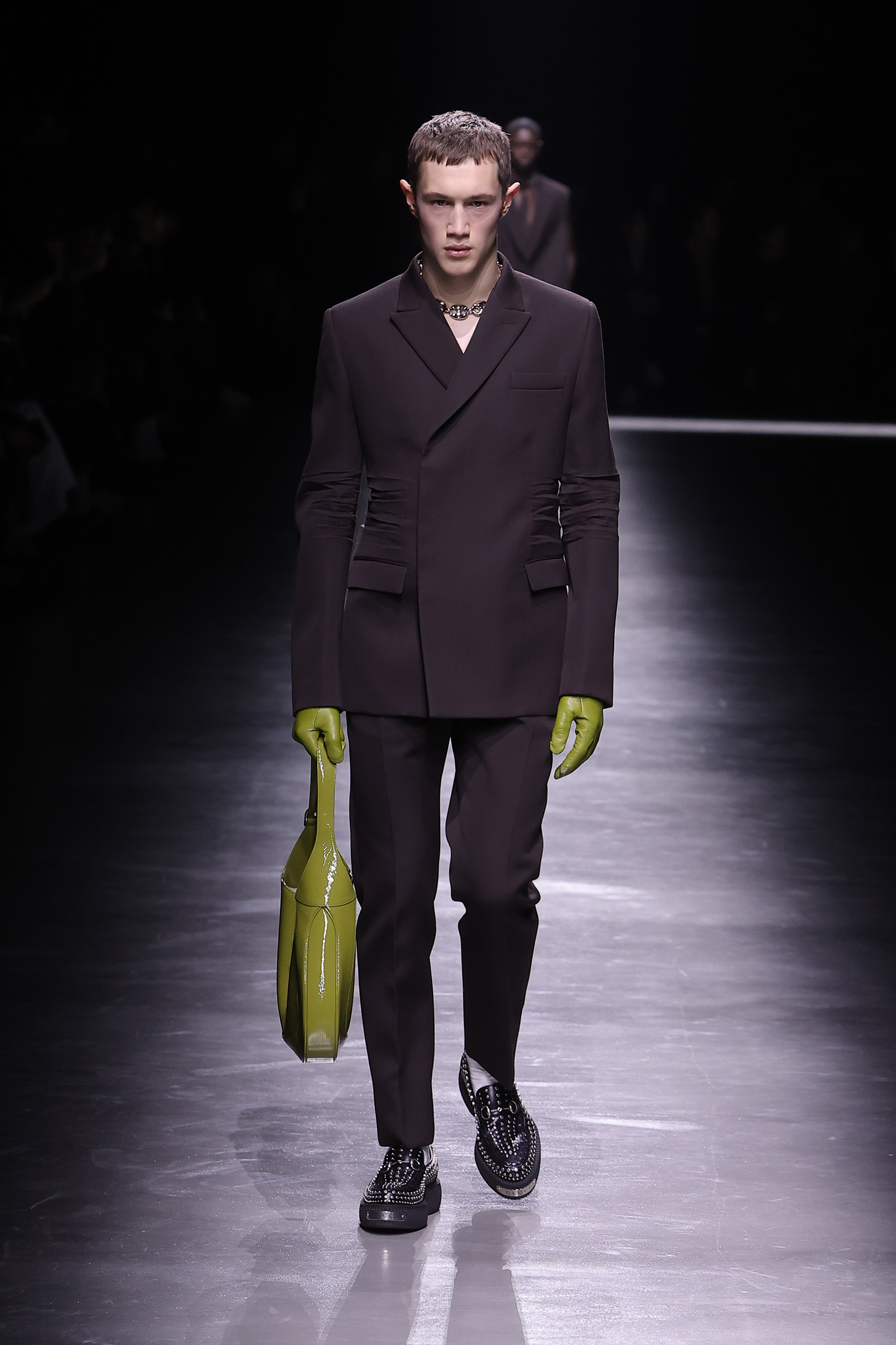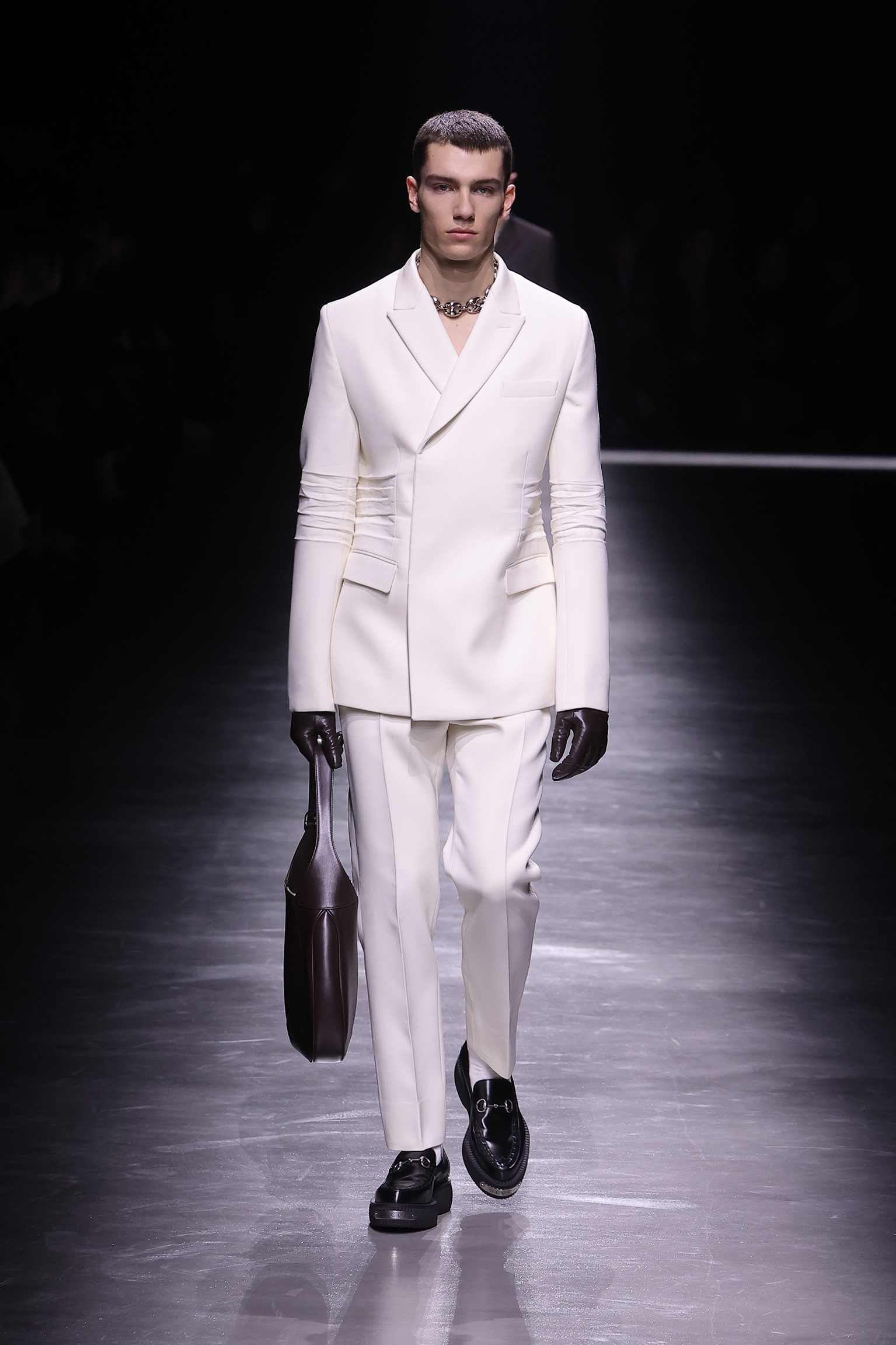Call it blind faith, but the breadth of emotions in the Gucci Fall/Winter 2024 menswear collection may have made us firm believers in its revised vision. What a strong start for Milan Fashion Week.
Time has always been fashion’s carnage.
When trends are aplenty, we can’t help but think of its result as something that exists at the moment, never beyond an expected expiration. When they are absent, however, it is rendered as dull, possibly even uninspiring. It’s these animating ideas that have made fashion remarkably resilient throughout the years, as it compels designers to choose a faction — either be in with the now or out with the old, just as the expression goes.
You might think, be in, of course. Why draw closer associations to the mundane when the appetite to be in vogue is far more tempting? But when all art starts to speak to the complexity of our desires, maybe, just maybe, the act of returning to simplicity becomes the most rebellious act.
Indeed, it would mean there was no better way to go forward with Gucci post-Alessandro Michele than to stir a scene with a subdued take on the, most recently, ostentatious brand. It’s also a costly gamble, one that current creative director Sabato De Sarno faced during his debut last September, where its initial reception was vastly divided. In his current proposal for Gucci’s future, its aesthetic has been boiled down to the basics. No longer is it defiant in its form, nor does it contest to be loud. De Sarno chose to pull equally from the down-to-earth, sexually liberating expressions of Tom Ford’s era, the intellectual innuendos of Michele’s time, and his experience as an emotional being.
The latter is important because for his sophomore through menswear Fall/Winter 2024, it was all about being moved. Ancora, after all, is a word in Italian that describes something that’s still on-going. That passion, a lust for life, was rooted in both collections. But when it was done on womenswear, it was the contrast of simplicity and emotion that got lost in the details — contradictory standards were definitely at play. But through menswear, the performance arrived on its most intended form. The clothes, mirrored from the former debut Ancora collection, traversed on masculinity as its subject and, in an unexpected twist, birth subversion in its appeal.
A tie around the neck becomes the show’s most memorable emblem — while not entirely new for fashion, creates a new contrast when it’s paired down with a pair of Horsebit loafers and a simplified Jackie bag. Or take it from one of the best looks yet, a shirtless offering paying homage to its historical hedonism that, too, meets the richness and complexity of our most recent memory of the house. Even the celebrities in attendance shows a triumphant comeback too, with house ambassadors IU and Jay Park, as well as Gulf Kanawut in attendance to support.
So if time reflects on fashion’s abilities, clearly De Sarno does not flinch at the idea of being both old and new. You can contrast the expectations of your work by exploring what it is they signify. For him, it’s all about a reset — like it or not, there’s more in the works. The biggest question still: are we now firm believers in a Gucci that is married in modernity more than in its past?

